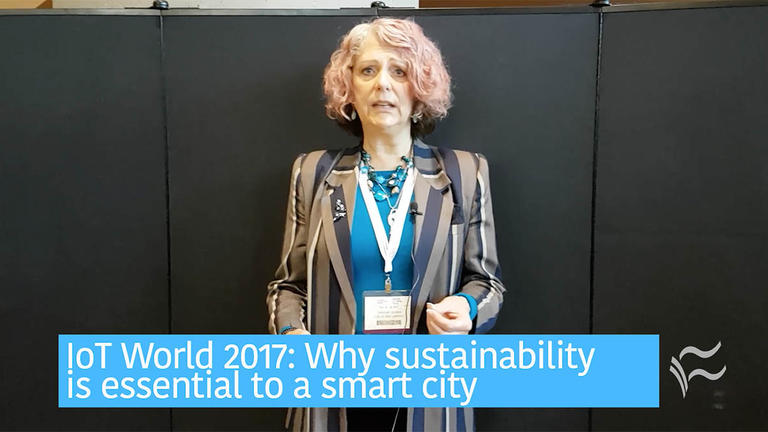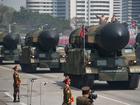The smart city market is one of the fastest growing segments of government and is set to hit $775 billion in 2021, according to BCC Research.
In just a few years, the number of smart cities has grown from approximately two dozen to more than 100, and it's just the tip of the iceberg, with more than 600 cities set to "go smart" in the next few years.
"This is a large and growing market. There are currently around 100 smart city projects, and we think in a short period of time that will expand to roughly 10-13% of medium to large cities. We see about 5,000 cities of that size and 600 will go to smart city technology in the fairly near term," said Michael Sullivan, BCC analyst and author of the report, Smart Cities: Growing New IT Markets. The report defines a medium city as having a population of more than 150,000 people, and a large city as having a population of more than 500,000 people.
SEE: 5 lessons from IoT leaders creating sustainable, smart cities (TechRepublic)
There is increased interest in smart cities due to the convergence of information and communications technology, particularly when it comes to advanced connectivity and analytics software and hardware. This includes IoT sensors and analytics platforms to coordinate information within departments and across city agencies.
Key findings from the report include:
- North America will continue to dominate the global market for smart city technologies.
- Investment rate in North America will increase from $118.5 billion in 2016 to $244.5 billion in 2021. Technology ubiquity, advanced investment, and organizational models in cities led by New York, Los Angeles, and Chicago in the US and Toronto, Vancouver, and Calgary in Canada will drive investment.
- Europe and Asia-Pacific continue to gain momentum as regional and local governments drive smart city technology adoption.
- Early investments in Asia-Pacific will boost market value in the short term, at $91.7 billion in 2016, helped by the aggressive growth investments by major countries.
- Economic climate improvement in the EU and major initiatives, such as energy management, will drive a 24.3% compound annual growth rate in the region, surpassing Asia-Pacific's CAGR of 14.7%
- Latin America and other small markets in the rest of the world are expected to exhibit strong growth.
The downside is that there is a lot of economic pressure on cities that don't have the financial resources to add smart city technology, Sullivan said.
The two significant movements that are driving smart city technology are sustainability and creating safer cities. "The safe city concept is unifying a lot of these initiatives," Sullivan said. Video surveillance, gunshot detection technology, body cameras on police officers, and using big data to send emergency responders to the scene faster are all part of smart city technology that makes citizens safer.
"We see really arming the first responders with more data so that they can have a lot more information when they get to the scene. It compresses the amount of time it takes to respond and have the right treatment for what's going on in the environment. They're cutting out the time delay and time lag to get to these events," Sullivan said.
Terroristic threats are also better handled with first responders having more information on hand. "The technology is maturing at the same time the need is increasing," he said.
The environment is another big factor, as the political storm around climate change has pumped up the cause.
"If anything, there is a bit of a maelstrom around the environmental issues right now. It was beginning to lag and along came Trump and he reinvigorated the market in spite of, or to spite the government, because there are herculean stakes," Sullivan said.
Top three takeaways for TechRepublic readers:
- In just a few years, the number of smart cities has grown from approximately two dozen to more than 100, and more than 600 cities are set to "go smart" in the next few years.
- The smart city investment rate in North America will increase from $118.5 billion in 2016 to $244.5 billion in 2021.
- There is increased interest in smart cities due to the convergence of information and communications technology.
Also see:
- The world's smartest cities: What IoT and smart governments will mean for you (TechRepublic)
- Smart cities: The smart person's guide (TechRepublic)
- 4 enterprise lessons from leaders who are transforming today's cities (TechRepublic)
- Samsung ARTIK SVP explains how to avoid liability from security issues within IoT(TechRepublic)
- Cisco announces smart cities framework with KPMG (ZDNet)
- IT leader's guide to the rise of smart cities (Tech Pro Research)
- IoT World 2017: How a smart city can use data analytics to improve services(TechRepublic)
- IoT World 2017: HPE and Platform as a Service in a smart city (TechRepublic)
- How to become a smart cities expert: Subscribe to TechRepublic's newsletter (TechRepublic)
Full Bio
Teena Maddox is a Senior Writer at TechRepublic, covering hardware devices, IoT, smart cities and wearables. She ties together the style and substance of tech. Teena has spent 20-plus years writing business and features for publications including People, W and Women's Wear Daily.
















